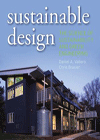A Stanford University think tank that focuses on research to improve the design, building and operation of sustainable facilities through use of virtual design and construction highlighted the importance of capturing metrics during its annual “summer session” conference in mid-September.
The driver behind the need for better metrics, explains Martin Fischer, director of the Center for Integrated Facilities Engineering, “is a dramatic increase” in owner demand for improved design and construction performance.
“Everyone is for more efficient and safer construction—fewer RFIs, fewer change orders, more of this and that. No one argues with that, and because no one argues, nothing changes. But as soon as you put numbers to it, things really pick up,” Fischer said to attendees and presenters, challenging them to replace adjectives for “improvement” with hard numbers.
Several presenters during the two-day conference rose to the challenge in sessions grouped around topics such as “Creating New Designs Fast,” “Designing and Building Very Fast” and “Building with High Quality Safely and Fast.” Others presented on projects executed with such dispatch that significant efficiencies had to be the enablers, even if the numbers were not always shown.
Examples included Tesla’s “Giga-factory,” where a surge in market demand for the Tesla automobile is driving efforts to conflate the work of building a factory to produce the cars and their batteries into as much of a parallel design-resource-fabricate-erect process as possible. The ongoing work was described by presenters from Tesla Motors, which is self-performing architectural design, mechanical engineering and construction management, with structural engineer Gregory P. Luth & Associates, steel detailer BDS Vircon and steel erector and fabricator W&W Steel.
Other presentations focused on achieving breakthrough performance on increasingly complex and rapid stadium construction, as presented by Derek Cunz, senior vice president at M.A. Mortenson Co.; Matt Breidenthal, vice president at HOK; and Martin Simpson, associate director at Arup.
Efficiency gains were less often credited to technology than to trust-building collaboration, communications, lean project delivery, and concurrent design and construction.
“Projects are all about people,” noted Roberto Charron, practice expert with McKinsey & Co., in a keynote on transforming engineering and construction operations. He urged firms to articulate clearly values and goals, invest in career development for managers, hold project-delivery teams accountable from the start through delivery, standardize systems and integrate innovations from previous work. He also recommended companies create unified, integrated data systems to support analytics and performance feedback.
Mortenson’s Cunz echoed the point about capitalizing on successful trials of innovation, saying, “It’s time to move from pilots to whole projects.” Peter Sosnowski, Webcore’s preconstruction director/VDC, described how Webcore reinforces innovation adoption by rotating engineers from distributed offices through the head office to train them in the company’s bid management process, which uses the services of BuildingConnected, a construction communication platform for owners, general contractors, and subcontractors to use to manage project communications and document sharing.
Darren Bechtel, founder and managing director of technology investor Brick & Mortar Venture, said his company looks not only for technology that solves problems but also at the likelihood of adoption, which can be a deal breaker.
“A lot of people talk innovation, but not that many are acting on it,” he said, adding that the proliferation of smartphones has laid the groundwork for the connected jobsite. He advised that the simplest step companies can take toward gaining these advantages is to move from paper-based operations to digital ones.





